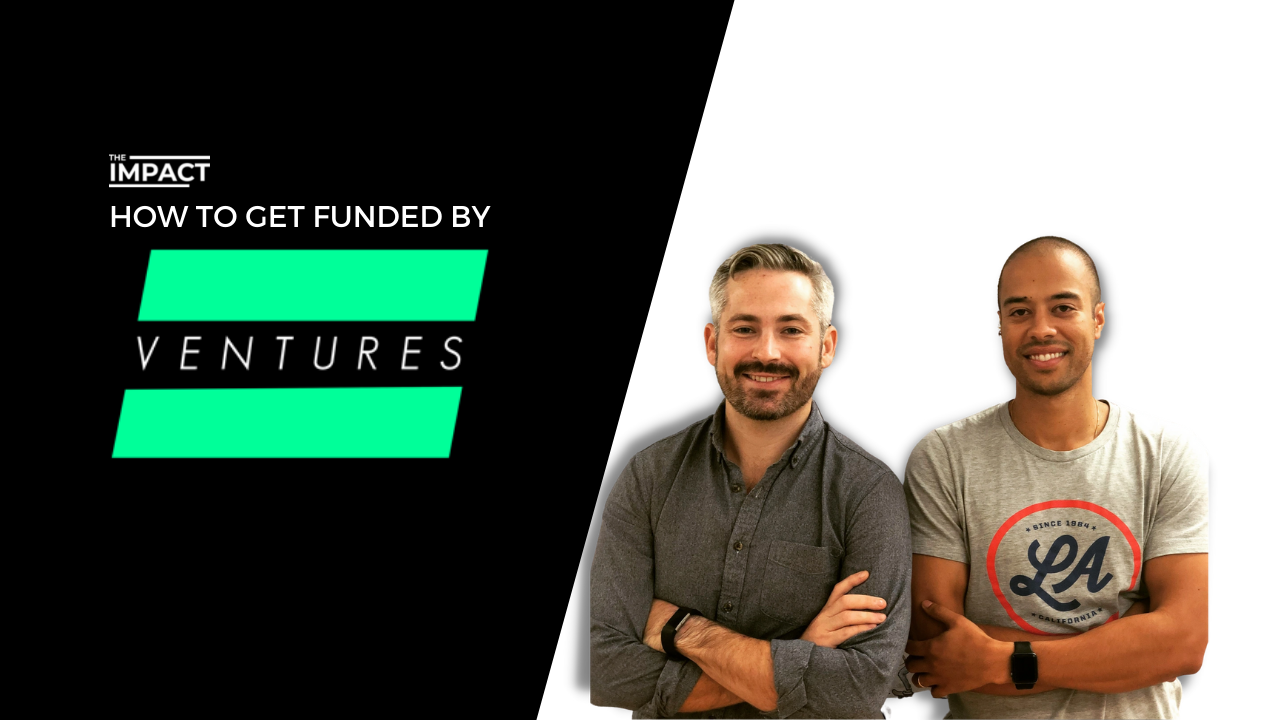☄️ We finally watched Don’t Look Up...Is it worse getting eaten by a bronterac, or finding out your stomach is filled with microplastics?
THE TL;DR 💨
🌳 How Corporate Partnerships Unlock Key Commercialization Pathways for Climate Tech Startups
- For startups in general and climate tech startups in particular, corporations unlock key commercialization pathways
- Startups can envision the corporate partnership trajectory as having three main phases: exploration, testing, and commitment.
💥 The 6 Question Approach That Unlocks Early Stage Climate Tech Growth
- Climate Tech startups that are in the process of finding a path to commercialize ground-breaking technology that has the potential to reduce carbon emissions tend to struggle with go-to-market
- Companies can grow into multiple markets, but for many climate tech companies, getting into one market alone is a challenge and a half
🏔️ The Fund Bridging the Digital Divide
- Equal Ventures is a thesis-driven, seed-stage fund investing across five sectors – one of which is climate
- Equal Ventures is open to investing in pre-revenue and pre-product businesses
📚 EDUCATION
How Corporate Partnerships Unlock Key Commercialization Pathways for Climate Tech Startups
By Katherine Geusz • helps climatetech startups and large corporations work together to get climatetech out into the world, faster.

It’s easy to understand why large corporations partner with innovative climate tech startups. As the climate transition gains momentum, established players in industries from energy to CPG recognize that collaborating with external innovators is essential to meeting their sustainability goals. More than that, in any rapidly changing space, innovation is a matter of survival – disrupt or be disrupted – and in the climate tech space, corporations understand that most of the industry’s disruptive potential comes from startups.
It might be slightly less obvious why startups seek corporate partners. But for startups in general, and climate tech startups in particular, corporations unlock key commercialization pathways.
First and foremost, most climate tech startups operate in B2B spaces. Corporations, therefore, often serve as important customers, or channels to customers, for startups. Second, corporations have the specialized resources and financial scale that can help capital-intensive climate tech companies succeed – from financial capital to specialized research facilities. Finally, with their global footprints and wide-reaching market access, multinational corporations can be a springboard for worldwide deployment.
But startups fear wasting time
Startups are sometimes reluctant to pursue corporate partnerships. Corporations can be opaque and complex. Their decision-making processes are quite slow when measured on startup timescales. Startups fear that partnership discussions will bog them down without producing results.
It’s true that without a clear sense of direction, startup-corporate partnerships can falter. It’s helpful, therefore, to have a structure in mind when navigating these relationships.
Navigating three phases of partnership development
Broadly speaking, all partnership activity has the same end goal: commercializing the startup’s technology at scale because of the market access and/or resources provided by the corporation.
Startups can therefore envision the partnership trajectory as having three main phases toward this goal:
- exploration
- testing
- commitment
The partnership trajectory begins with exploration.
In the exploration phase, startups and corporate partners learn about each other and evaluate their long-term relationship potential. The exploration phase can be beneficial for startups in and of itself. During exploration, startups can ask corporations to provide insight into target markets and help with customer discovery.
For their part, corporations usually want to evaluate a startup’s technology during exploration. Startups may receive helpful technical feedback as a result of these discussions. It’s a good idea to have NDAs in place for exploratory partnerships and to exclude the possibility of joint IP creation until later in the partnership trajectory. Startups can rest assured that corporations usually want NDA protection just as much as startups do.
Not to be overlooked, one of the most important outcomes of the exploration phase is simple trust-building.
If exploration goes well, the next step in the partnership trajectory is testing. Proof-of-concept projects (little tests) and pilots (big tests) are two common testing formats.
In the testing phase, a hypothesis is formulated and results are generated. The hypothesis may seek to demonstrate performance levels for the startup technology or test the startup technology’s compatibility with the corporation’s technology, for example.
As opposed to the exploration phase, a testing phase has a defined timeline, objective, and, most importantly, clear next steps that are unlocked based on the results of the test. A critical function of the testing phase is that it secures the corporation’s attention for the duration of the test and builds a bridge to long-term commitment.
During the exploration phase, relationships continue to be evaluated and strengthened during the testing phase.
The final phase of the partnership trajectory is commitment.
In the commitment phase, formal partnerships materialize in a variety of forms, from CVC investments, to commercial agreements, to licensing deals, to acquisitions, and more.
Often, rather than an ending, these partnerships signify the true beginning of a startup and corporation’s joint efforts toward commercializing the startup’s technology at scale. What makes the commitment phase significant is the fact that both parties have put capital – financial, reputational, or both – on the line to achieve shared success.
While the evaluation and testing phases of the partnership trajectory have standalone benefits for startups, commitment partnerships are the ultimate prize of partnership activities. They represent the startup and corporate working together in an enduring way to commercialize the startup’s technology at scale.
![The three stages of corporate partnerships [Greentown Labs x The Impact]](https://readtheimpact.com/wp-content/uploads/2022/02/readtheimpact.com-1397-×-1180-px.png)
Is it always so cut-and-dry?
Absolutely not! The path from exploration to testing to commitment is sometimes nonlinear. Some partnerships develop quickly; others (many) progress more slowly.
Some partnerships focus on technological or market synergies alone, while others seek pure financial investment. More commonly, however, I see two or three of these activities pursued in parallel, as startups and corporations seek to evaluate strategic alignment across multiple axes.
The world of climate tech startup-corporate partnerships has never been more dynamic or exciting. With this simple framework in mind, startups can organize their efforts and increase the odds that the time they invest in pursuing corporate partnerships yields meaningful results.
🏹 GROWTH FOR CLIMATE STARTUPS
The 6 Question Approach That Unlocks Early Stage Climate Tech Growth
By Swarnav S Pujari • is the Head of Growth at Gaiascope and Appointed Chairman of the Yorktown Climate Smart Communities Task Force - and has extensive growth, product and policy experience across the climate sector.

Climate Tech startups that are in the process of finding a path to commercialize ground-breaking technology that has the potential to reduce carbon emissions tend to struggle with go-to-market. Many times this is because technology is developed in a lab or a solution is developed before a market problem is identified.
This tends to be the first chasm of death for climate tech startups and we can trace this back to busts from the Climate Tech 1.0 era. However, this isn’t always the case and the key to success for climate tech startups navigating this first chasm of death is customer discovery and identifying problem-market fit as soon as possible.
However, when you’re a solution out in the market looking for a problem – especially as a climate tech startup – you need to do things differently to ensure you get the results you’re seeking.
The Multiple Segments Challenge
A common occurrence when you look at your technology – especially when you’re at the seed stage and trying to raise a round of funding – is that you see opportunities to apply it in multiple markets. When I see this – having done it myself – it shows me that there is a lack of a go-to-market strategy in place. Companies can grow into multiple markets, but for many climate tech companies, getting into one market alone is a challenge and a half.
However, I see this as a huge opportunity for any climate tech startup in this position today.
Multiple segments = Goldmine for customer discovery
Should you be in a position where you’re exploring multiple potential applications for your technology and don’t know how to get started – here’s a simple step-by-step process that I’ve used that works exceptionally well.
- Write down every single market segment and be specific about the customer’s pain point (If it’s a consumer, write names of people who would buy your product and if it’s a business, write companies who would buy your product)
- List out at least 5 people/companies you can speak to in each of your market segments listed above
- Get on 30-minute calls and try to answer the following 5 questions to test if that market segment has value:
- What are the biggest pain points ____________? (Checking how they feel the pain from this problem)
- What’s the hardest thing about ____________? (Checking the severity of this pain point)
- Tell me about the last time you encountered that problem… (Checking frequency of the pain point)
- Why was that hard? (What makes this pain point unmanageable & may share the “$ cost” of that pain point)
- What, if anything, have you done to try to solve the problem? (Are they actually trying to solve this problem?)
- What don’t you love about the solutions you’ve tried? (What your competition falls short on)
Identifying Problem-Market Fit
The above data-gathering process will quickly help you identify a problem and market that you can solve better than the alternatives. At this stage, you need to dial in and focus deeply on the customer segment which provides the highest value for your product and can result in you landing contracts.
At this stage, you’ve identified a series of market segments for your climate tech startup with data on what the total opportunity is if you focus on one of them.
In this ongoing series, we’ll be covering and breaking down successful climate tech startups to understand exactly how they grew their business, starting from the earliest stages of identifying an opportunity to growing through their exit.
💸 VC DEEP DIVE
The Fund Bridging the Digital Divide
By Daniel Kriozere • is a Principal at C3, Tech Scout at For ClimateTech, and Venture Scout at Prithvi - and has an extensive network within the broader climate investment and startup community.

Equal Ventures (Equal) is a thesis-driven, seed-stage fund investing across five sectors – one of which is climate, as climate change presents one of the biggest challenges of our time. Equal is open to investing in pre-revenue and pre-product businesses. The fund’s investment decisions are largely driven by founder-market fit.
Fund Snapshot
- Stage: Seed
- Check Size: $1-2M
- Geography: US, Canada
- Lead/Follow: Lead or Co-Lead
- Revenue/Valuation Thresholds: No revenue required
About the Fund
Why was the fund created?
While Rick had always known he would eventually want to start a fund, the inspiration for Equal came from reading a book called Technological Revolutions and Financial Capital: The Dynamics of Bubbles and Golden Ages. The book discusses innovation cycles throughout history and the turning points that enable a transition from building core technology to deploying it across society. These turning points only occur every 60-90 years. Rick wanted to take advantage of the opportunity to help democratize access to technology and solve some of the major issues facing society today. Equal Ventures is purpose-built to deploy technology across society and industry.
What domains in climate tech does Equal have the greatest expertise in?
Equal understands the power market and the utility market extremely well, especially as that’s where Rick’s career began. Rick has worked in many countries on various things – from rural electrification to renewable energy development and grid operations. Equal more broadly looks at electrification and sustainability of buildings.
What type of portfolio support does Equal provide?
Equal’s team is five strong, and Equal invests in 4-6 companies per year, so they are very involved with their portfolio companies. Equal believes that founders care about the 4 P’s:
- Preparedness – understanding of the market
- Perspiration – operations support
- Partnership – alignment with the founders
- Price – valuation and terms
About Investments
What is Equal’s investment process and timeline?
Equal generally likes to meet founders well in advance of a process, often getting to know and helping founders for months in advance of an investment. That said, they’ve moved in as little as 5 days from initial meeting to term sheet. They only invest in sectors they understand, so their approach is primarily geared to evaluating:
1) Is this the right founding team to seize this opportunity?
2) Does their approach demonstrate the potential for near-term flywheels/moats?
3) Is now the most appropriate entry point for their firm?
What would make Equal consider deviating from their typical criteria?
Equal typically won’t deviate from its strategy, unless they find awesome founders that fit their focus/thought process/analysis.
☕ CONSIDERING A WAY TO SUPPORT US?
Consider donating if you found this newsletter useful. These dollars are used to support The Impact and our writers as we continue to produce research and insights in the space.
✍️ WANT TO HELP US IMPROVE?
How would you feel if you could no longer receive The Impact?
Editors: Stephanie Zulman, Swarnav S Pujari Writers: Daniel Kriozere, Katherine Geusz
If you aren’t absolutely thrilled with The Impact, reply and let us know why. Or you can unsubscribe from all updates by clicking here.
Copyright © The Impact 2021. All Rights Reserved || 19 Morris Ave, Bldg 128, Brooklyn NY 11205

